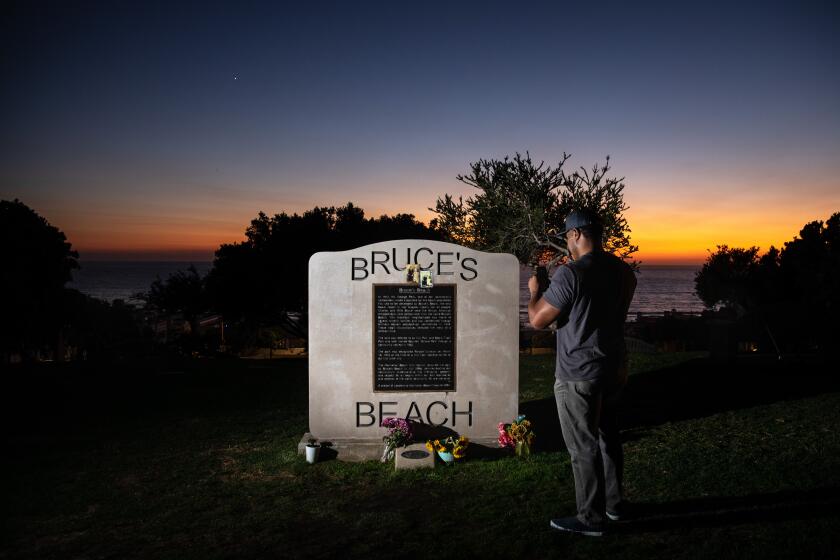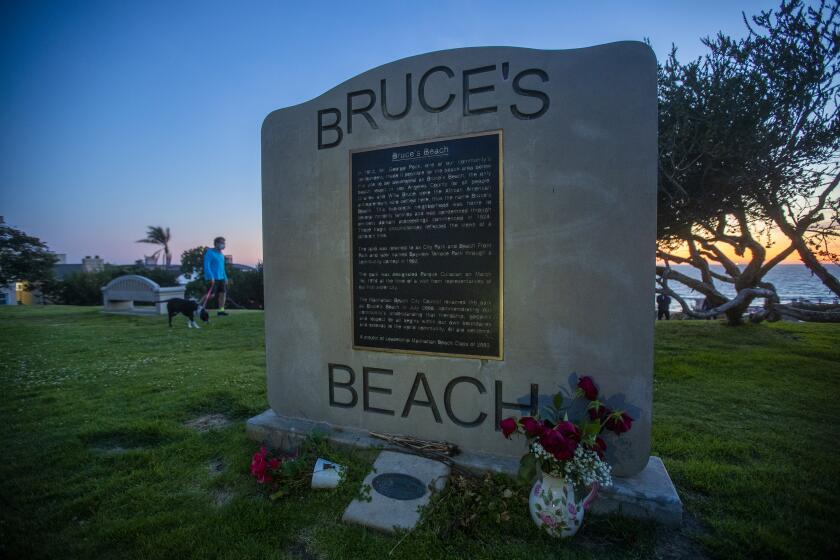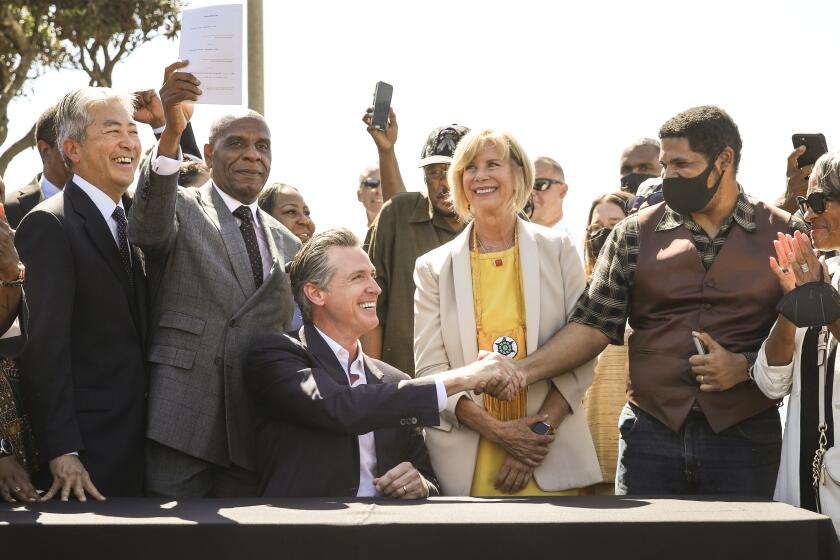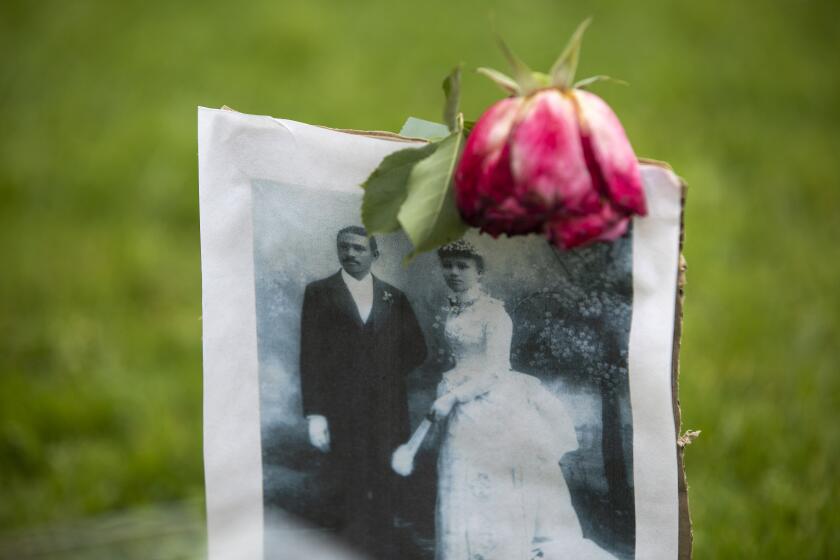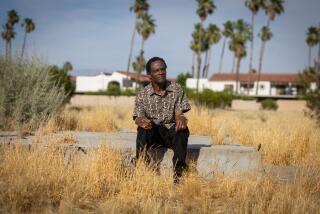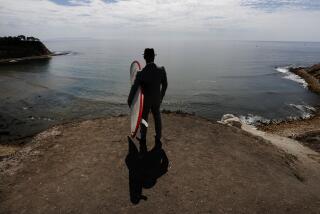Unprecedented plan to return Bruce’s Beach to rightful Black heirs revealed by officials

- Share via
In a plan made public for the first time, Los Angeles County officials have detailed how they would complete the unprecedented transfer of Bruce’s Beach to the descendants of a Black couple who were run out of Manhattan Beach almost a century ago.
The beachfront property, estimated to be worth $20 million after a complicated appraisal, would be transferred to the Bruce family following an escrow process, according to the proposed plan released late Wednesday. The county would then rent the property from the Bruces for $413,000 per year and maintain a county lifeguard facility at the site.
“This land should have never been taken from the Bruce family over 90 years ago. Now, we are on the precipice of redemption and justice that is long overdue,” said Holly Mitchell, chair of the Los Angeles County Board of Supervisors. “Although we cannot change the past, we have a responsibility to learn from it and to do what is right today. ... I look forward to standing with my colleagues on the right side of history.”
County staff and a legal team representing the Bruce family pro bono have spent months hammering out the details and thinking through every possible outcome. They’ve received support from state lawmakers and reparations advocates — as well as from Gov. Gavin Newsom, who authorized the transfer last September and codified into law that the property had been wrongfully taken.
State and city leaders across the nation have looked on to see exactly how the historic transfer would be made. Many say Bruce’s Beach could forge a path for those seeking to reckon with past injustices that violently dispossessed Indigenous people and blocked Black people, Latinos, Japanese Americans and many others from owning property and building wealth in this country.
“This has not been an easy process … there was no precedent for this,” said L.A. County Supervisor Janice Hahn, who said a team of lawyers scoured the books and could find no comparable case study. “We wanted this to be foolproof. We wanted to transfer the property to the Bruce family in the safest way possible so that they would not inherit legal challenges or any kind of burden.”
Gov. Gavin Newsom has authorized the return of property known as Bruce’s Beach to the descendants of a Black couple that had been run out of Manhattan Beach almost a century ago. Catch up on The Times’ coverage.
The proposed agreement will be brought before the L.A. County Board of Supervisors for a vote next Tuesday. If approved, the transfer would realize a call to action that began more than two years ago — when the grassroots movement Justice for Bruce’s Beach sparked a national conversation and forced a reckoning in Manhattan Beach.
The story of Bruce’s Beach starts with the Tongva people, who tended this stretch of coast before real estate developers staked their claim in the early 1900s and built what is known today as Manhattan Beach.
By 1912, Charles and Willa Bruce had made their way to California. Willa paid $1,225 for the first of two lots along the Strand between 26th and 27th streets and ran a popular lodge, cafe and dance hall that extended a rare welcome to Black families seeking a weekend by the sea.
Many called the area Bruce’s Beach. A few more Black families, drawn to this new community, bought and built their own cottages next door.
Before Manhattan Beach shut it down, Bruce’s Beach was a famous Black-owned beach resort. Now, some want the city to atone for its actions.
But the Bruces and their guests faced increasing threats from white neighbors. The Ku Klux Klan and local real estate agents purportedly plotted ways to harass them.
When racism failed to drive this Black beach community out of town, city officials in 1924 condemned the neighborhood and seized more than two dozen properties through eminent domain. The reason, they said, was an urgent need for a public park.
But for decades, the properties sat empty. The two oceanfront parcels that had been owned by the Bruces were transferred to the state in 1948, then to the county in 1995. As for the other lots, city officials eventually turned them into a pretty park overlooking the ocean.
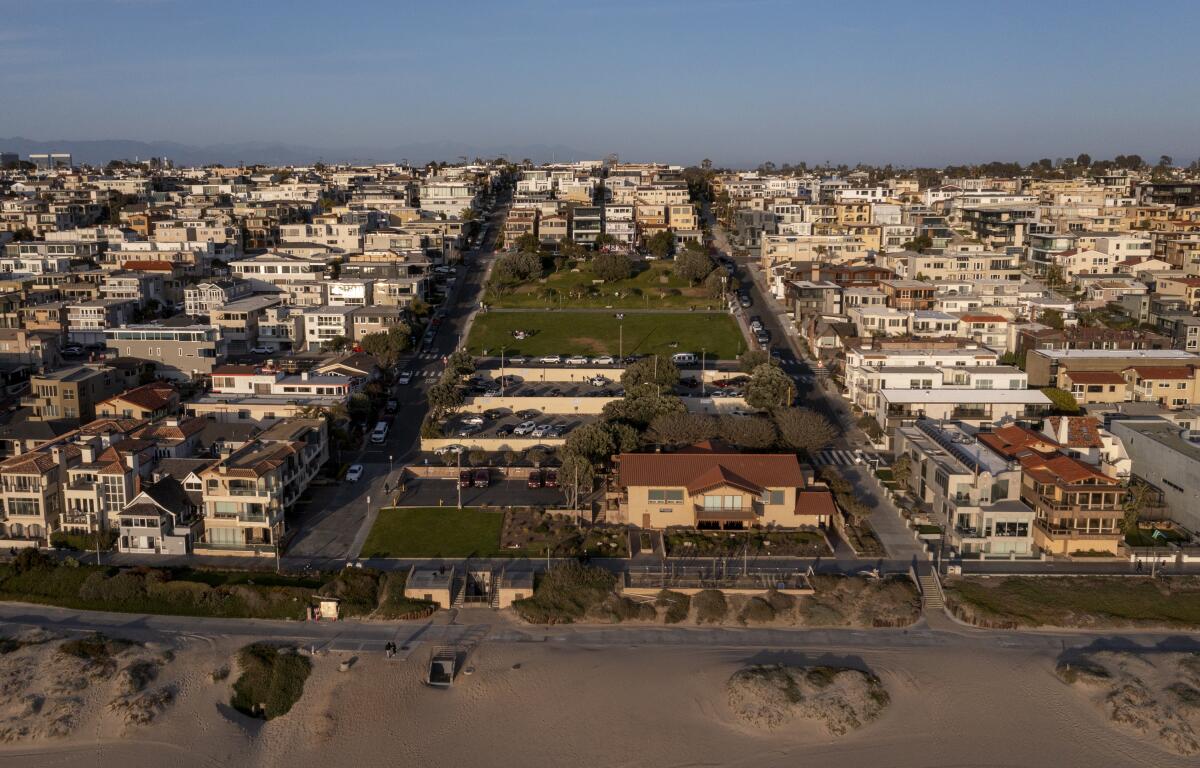
When Hahn realized that the county now owned the two parcels where the Bruce resort once stood, she jumped into action. She called the great-great-grandson of Charles and Willa Bruce, Anthony Bruce, who had been thrust into the spotlight in 2020 after the history of Bruce’s Beach became a national story.
“I just want justice for my family,” he told Hahn, explaining how this painful history had torn his family apart. Bruce, a security supervisor in Florida, said his father rarely talked about the beach that bears the family’s name. “I’m just looking for hope and mercy.”
Manhattan Beach won’t apologize for running Black property owners out of town 100 years ago, but a county official seeks to make restitution.
Hahn joined forces with Mitchell and State Sen. Steven Bradford (D-Gardena), who rallied state lawmakers and the governor to authorize transferring the public property back to private ownership.
Every step of this process has been uncharted — and ripe for challenge. A resident of Palos Verdes Estates took it to court almost immediately after the county tried to move forward, stating that the property transfer would be an unconstitutional “gift,” among other objections.
When Los Angeles Superior Court Judge Mitchell Beckloff reviewed the case in April, he dismissed it — stating that not only is the property transfer legal, it’s also critical to maintaining government integrity.
“The court finds where the appropriation of public funds and/or property is to address and/or remedy racial discrimination committed by the government, it serves a public purpose,” Beckloff wrote in his ruling. “Righting a government wrong perpetrated in breach of our core and fundamental constitutional principles works to strengthen governmental integrity, represents accountability in government and works to eliminate structural racism and bias.”
George Fatheree, a real estate transaction lawyer who is representing the Bruce family pro bono, helped the Bruces and the county figure out the most complex details. They conducted separate genealogy studies and confirmed four direct descendants: Anthony Bruce and his father, brother and uncle. (112 people went through the county’s legal heir determination process to check whether they were related to Charles and Willa Bruce.)
Gov. Gavin Newsom authorizes returning the land known as Bruce’s Beach to the descendants of a Black couple that had been run out of Manhattan Beach.
They also went through a complicated appraisal process and economic analysis to determine the value of the property. Finally, they nailed down a plan: Once the county transfers the property, it will enter into a two-year agreement to lease the property for $413,000 a year and take responsibility for all operation and maintenance costs.
The lease also includes a right for the county to purchase the land for $20 million. Both parties agreed that two years gives them a reasonable amount of time to consider this option as a possible long term arrangement.
“At the end of the day, no one has done this before. There’s no map or playbook,” Fatheree said. “My focus since the beginning has been to get this exactly right — both so that it could withstand any lawsuits or challenges and also so that if other governments are inspired and follow in the county’s steps, that they’ve got what hopefully amounts to something helpful to follow.”
The return of my family’s land will let us do what countless American families have done since our country’s founding: inherit property and build wealth.
Hahn admitted the process has been stressful at times — and even more complicated than she imagined it would be. It felt like the world was watching their every move, she said. The county was getting calls from members of Congress, the state’s reparations task force and city leaders from across the nation.
As tricky as this process has been to get right, what happened at Bruce’s Beach might end up being a lot more clear-cut than other injustices that took place in this country. But just because something is hard and just because something happened 100 years ago, Hahn said, doesn’t mean it’s too late to try.
This is just the beginning, she said. “I hope we spend the next 100 years righting more wrongs.”
More to Read
Sign up for Essential California
The most important California stories and recommendations in your inbox every morning.
You may occasionally receive promotional content from the Los Angeles Times.
